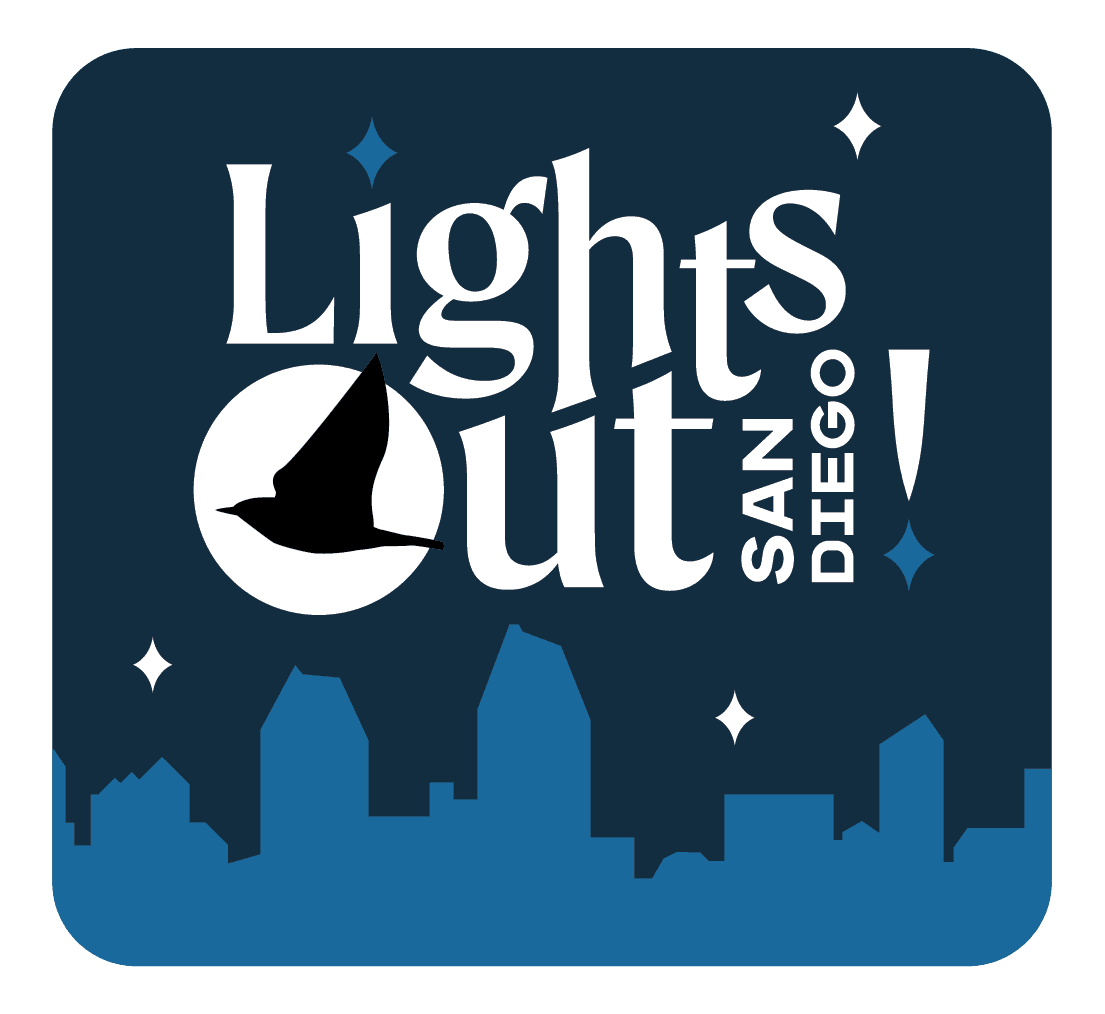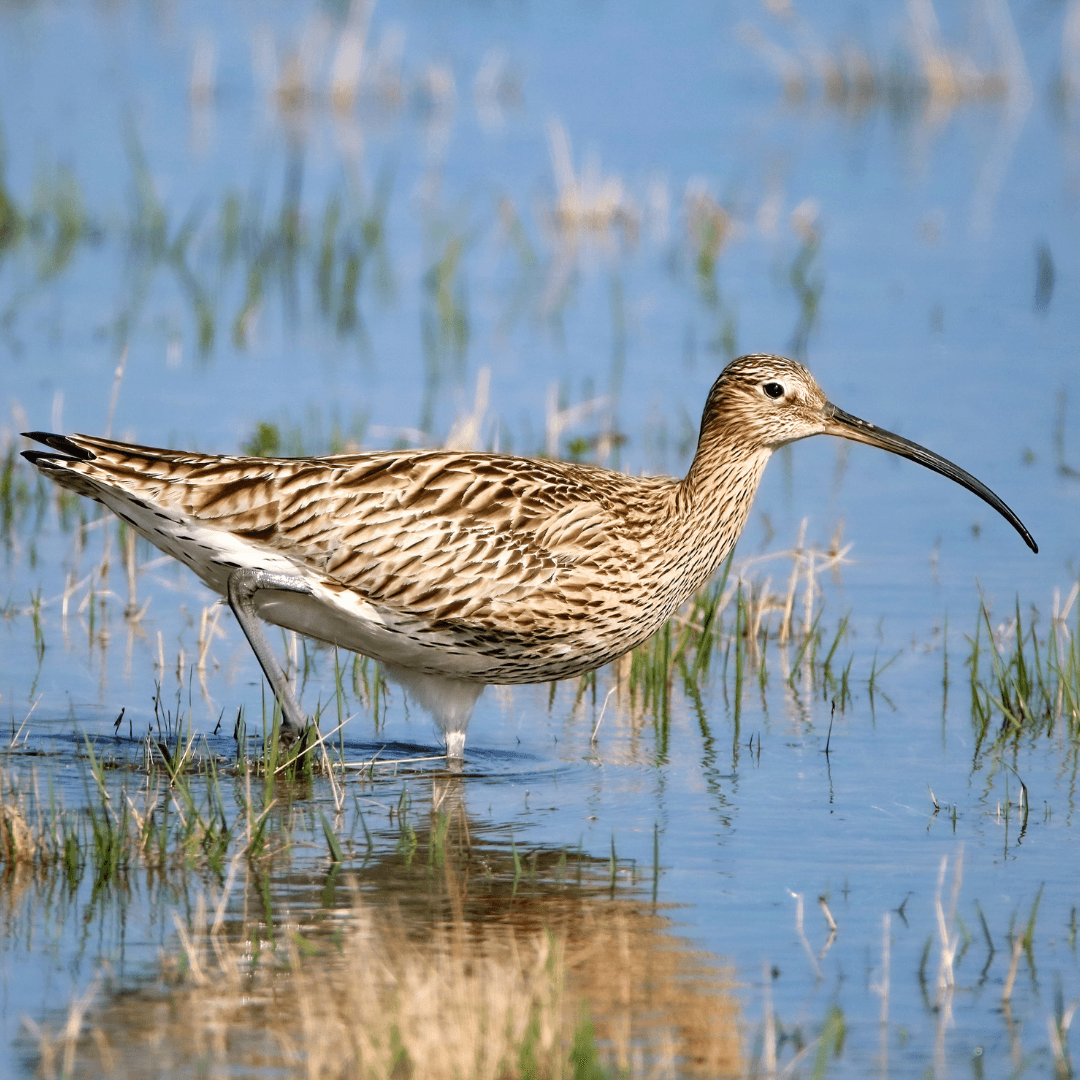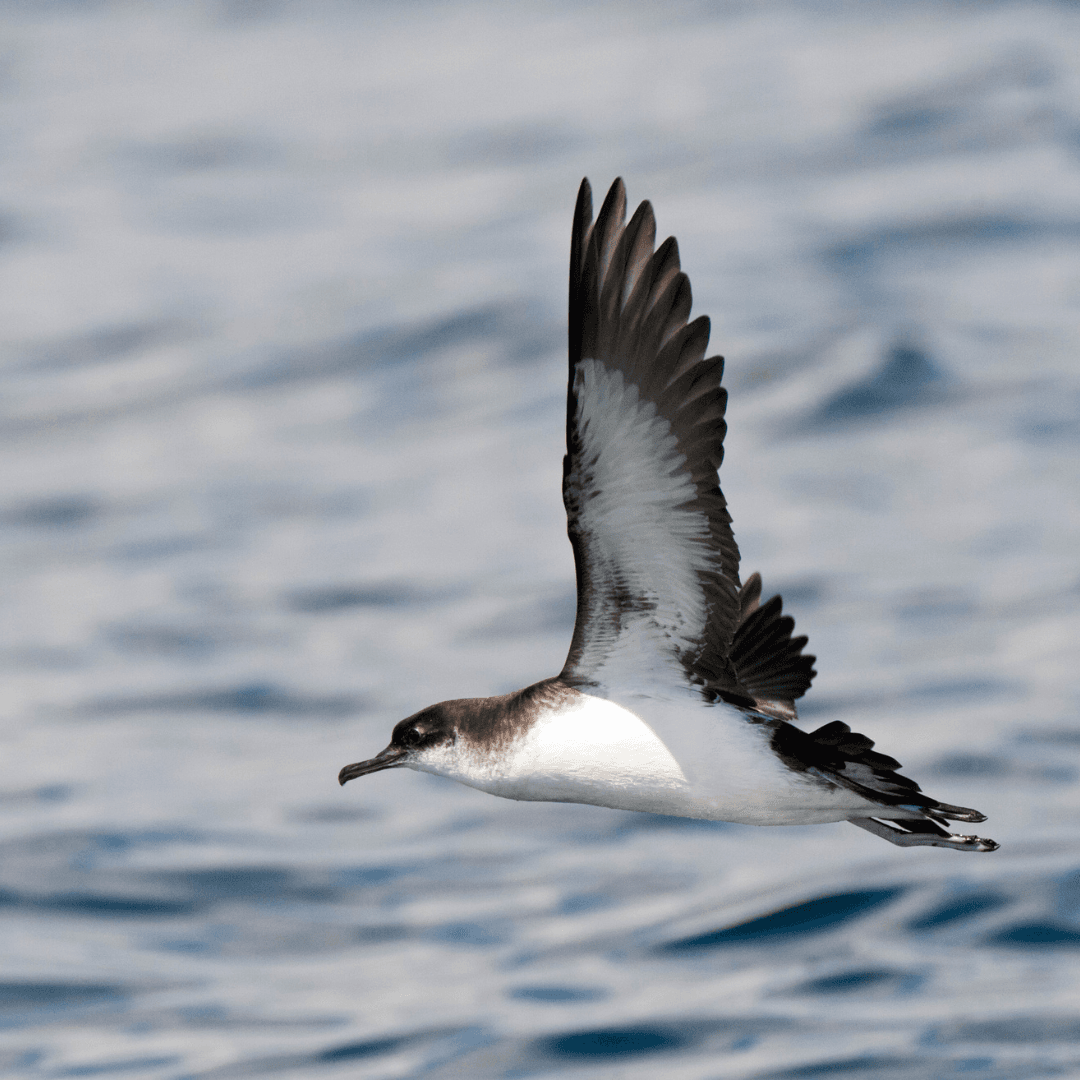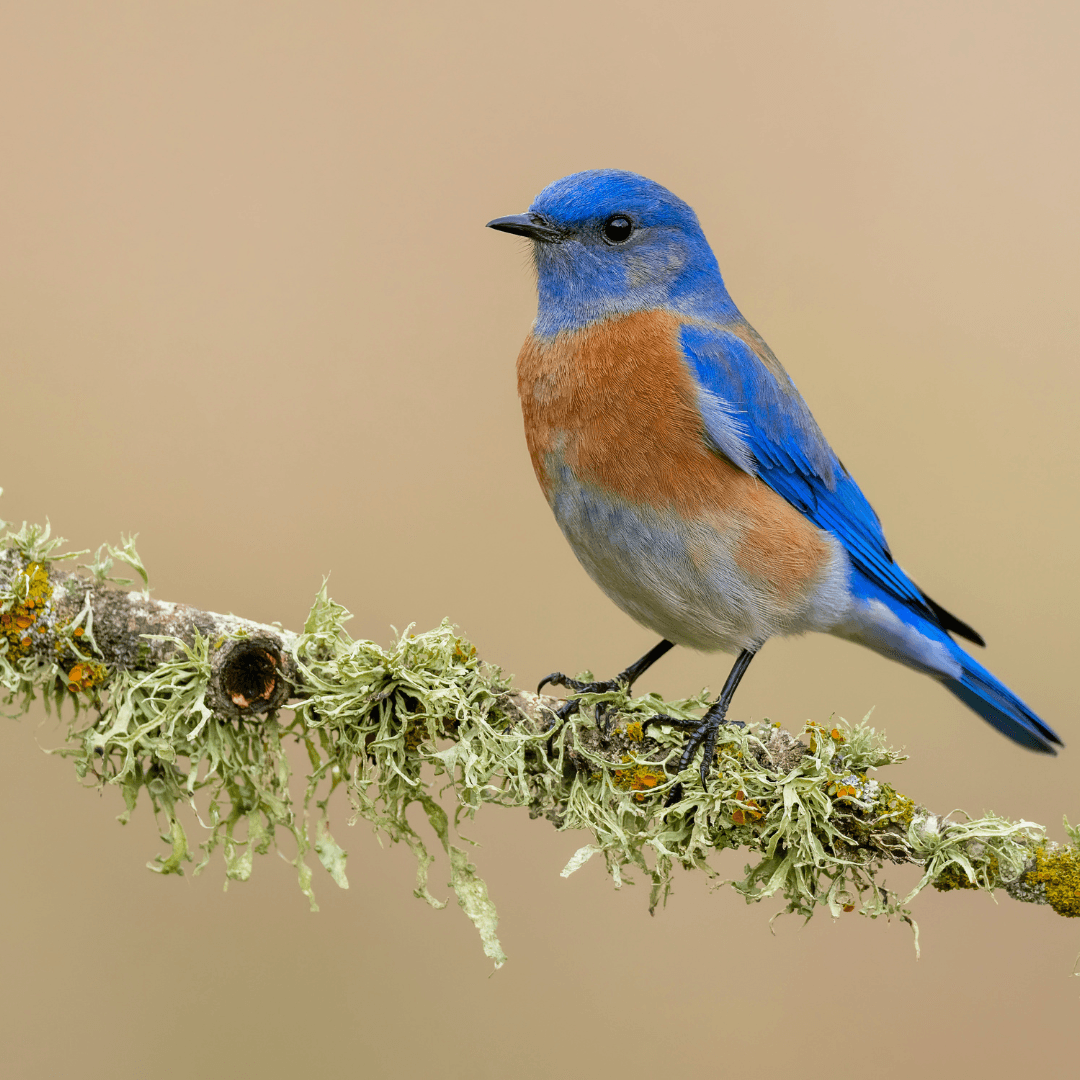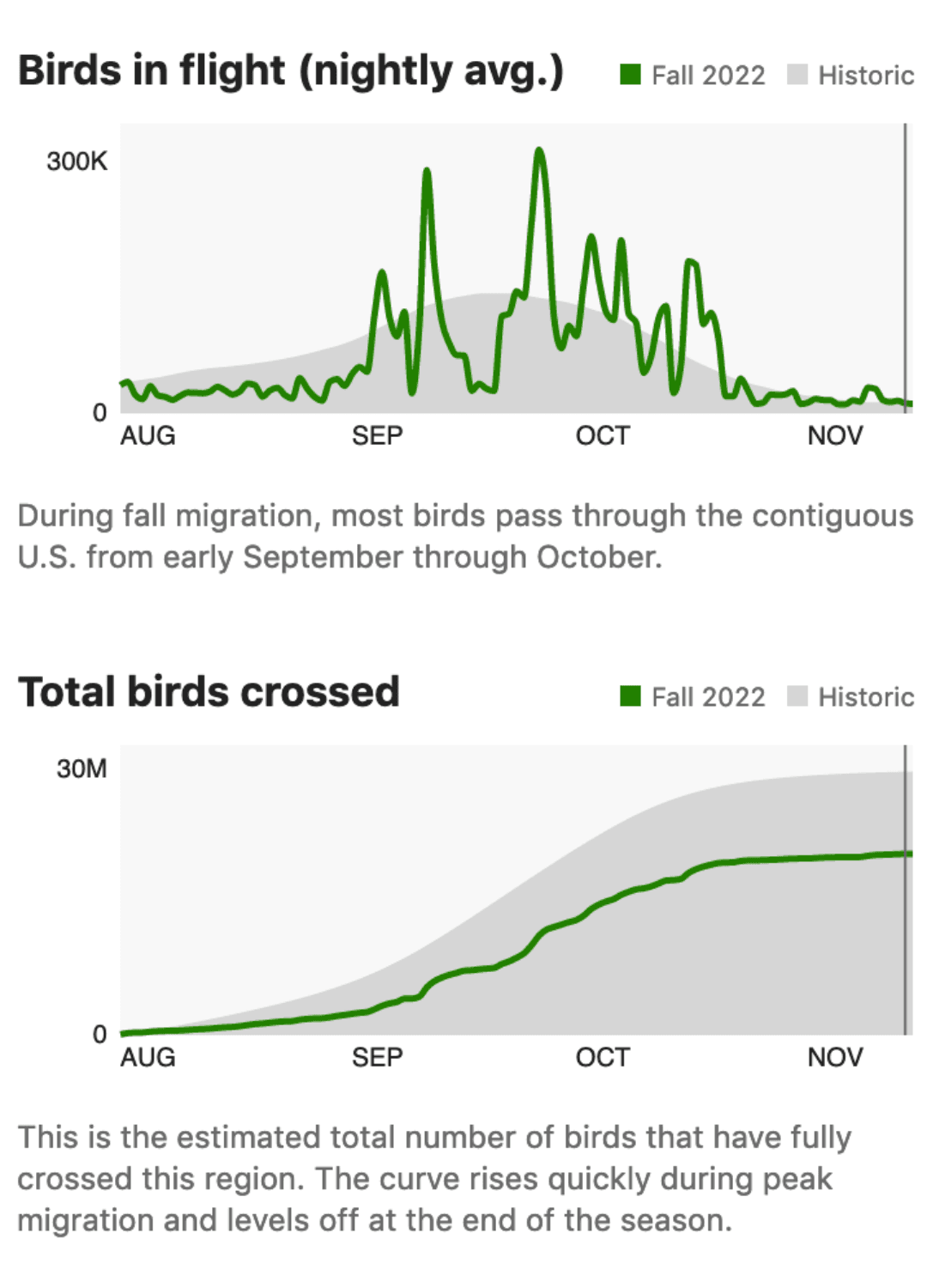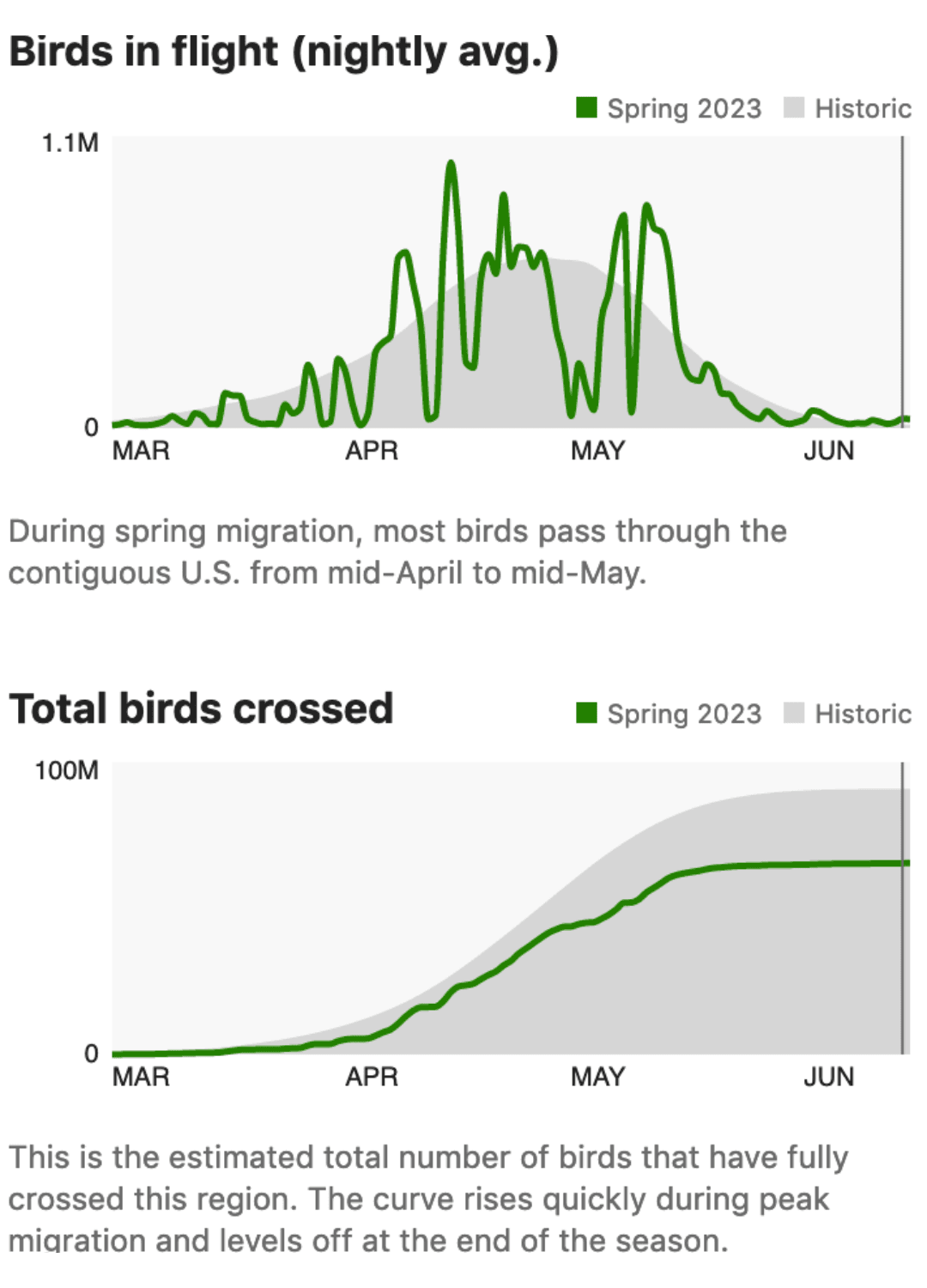WHY LIGHTS OUT?
More than 80% of North America’s migrating birds migrate at night, and San Diego is privileged to see so much of this migration. Our beautiful county is on the Pacific Flyway—we are right along the path that many different species of birds use to head south in the fall and come back north in the spring.
Light pollution can disrupt migration as it can cause:
- Disorientation - Birds are drawn to the light
- Exhaustion - Birds can find themselves flying in circles over and over
- Building collisions - From their encounters with brightly lit building
- Delays in migrations - Some birds slow down their flight in brightly-lit cities
- Grounding of seabirds - From landing in light-polluted areas and being unable to fly again.
Researchers have studied the impact of light pollution on many species of birds, like:
HOW SERIOUS IS THE PROBLEM?
According to the US State of the Birds report for 2022 nearly 1 in 4 breeding birds have been lost from the US and Canada in the past 50 years. This is a staggering loss of 3 billion birds!
It has been reported that about 365 million to 988 million birds die every year in the US due to collisions with buildings. Of these deaths 56% occur at low-rises (4 to 11 stories) and 44% at residences.
In 2017 in just one night 400 migratory birds were killed by just one skyscraper in Texas.
IMPORTANCE OF SAN DIEGO FOR MIGRATORY BIRDS
WHAT CAN YOU DO?
Sign up to be a part of Lights Out, San Diego! and help minimize light pollution so we can reduce bird mortality as they fly over San Diego in the coming months!
Spring Migration Dates
- Full Spring Migration Period: March 1 – June 15
- Critical Spring Peak Migration Period for San Diego: April 15 – May 15
Fall Migration Dates
- Full Fall Migration Period: August 1 – November 30
- Critical Fall Peak Migration Period for San Diego: September 1 – November 15
HOW TO GO LIGHTS OUT
STEP 1: Sign up here to pledge to go Lights Out!
STEP 2: Turn off all non-essential lights from 11 pm to 6am during the migration season
- Turn off any decorative/ landscape lighting
- Dim interior lighting and close blinds to make sure no light leaks out
- Turn off lights when leaving home/ office
STEP 3: During migration season report any dead bird sightings using iNaturalist
STEP 4: Spread the word by posting your support on social media using #LightsOutSanDiego
STEP 5: Talk to your Homeowners’ Association / Building Manager / School / Employer to see if you can bring Lights Out, San Diego! to your community!
_______
For essential lights (e.g. security and safety lighting) follow these guidelines from DarkSky International:
- Install motion sensors to minimize outside light use
- Make sure outside lights are aimed down and shielded
- Use warm colors for lighting (<3000 Kelvin)
HELP COLLECT DATA
To better understand how birds may be impacted in the San Diego Region by light pollution and buildings, this community science data collection effort aims to collect presence and absence data for bird strikes during the critical period from April 15th through May 15th, 2024, during spring migration when large numbers of birds migrate through this area.
RESOURCES
Video Resources:
Cornell Lab of Ornithology Webinar on Lights Out
San Diego Audubon’s Friends Webinar on Light Pollution
International Dark Sky Association’s Webinar on Night Matters - Lights Out!
PBS - Bird Strikes in Philadelphia
Other Resources:
https://birdcast.info/science-to-action/lights-out/heres-how-you-can-make-a-difference/
https://www.audubon.org/lights-out-program
https://academy.allaboutbirds.org/live-event/lights-out-to-protect-migratory-birds/
Outdoor lighting at night doesn’t do what you think it does to reduce crime and increase safety
https://www.birds.cornell.edu/home/wp-content/uploads/2020/01/7-Simple-Actions-trifold.pdf
References:
Simons, A.L.; Martin, K.L.M., and Longcore, T., 2022. Determining the effects of artificial light at night on the distributions of Western Snowy Plovers (Charadrius nivosus nivosus) and California Grunion (Leuresthes tenuis) in southern California. Journal of Coastal Research, 38(2), 302–309. Coconut Creek (Florida), ISSN 0749-0208.
Jolkkonen, J., Gaston, K.J. & Troscianko, J. Artificial lighting affects the landscape of fear in a widely distributed shorebird. Commun Biol 6, 131 (2023). https://doi.org/10.1038/s42003-023-04486-x
Syposz, M., Padget, O., Willis, J. et al. Avoidance of different durations, colours and intensities of artificial light by adult seabirds. Sci Rep 11, 18941 (2021). https://doi.org/10.1038/s41598-021-97986-x
Morelli, F., Tryjanowski, P., Ibáñez-Álamo, J.D. et al. Effects of light and noise pollution on avian communities of European cities are correlated with the species’ diet. Sci Rep 13, 4361 (2023). https://doi.org/10.1038/s41598-023-31337-w
Scott R. Loss, Tom Will, Sara S. Loss, Peter P. Marra "Bird–building collisions in the United States: Estimates of annual mortality and species vulnerability," The Condor, 116(1), 8-23, (2 January 2014)
https://www.audubon.org/news/nearly-400-migratory-birds-were-killed-one-texas-building-single-night
https://www.stateofthebirds.org/2022/state-of-the-birds-at-a-glance/


